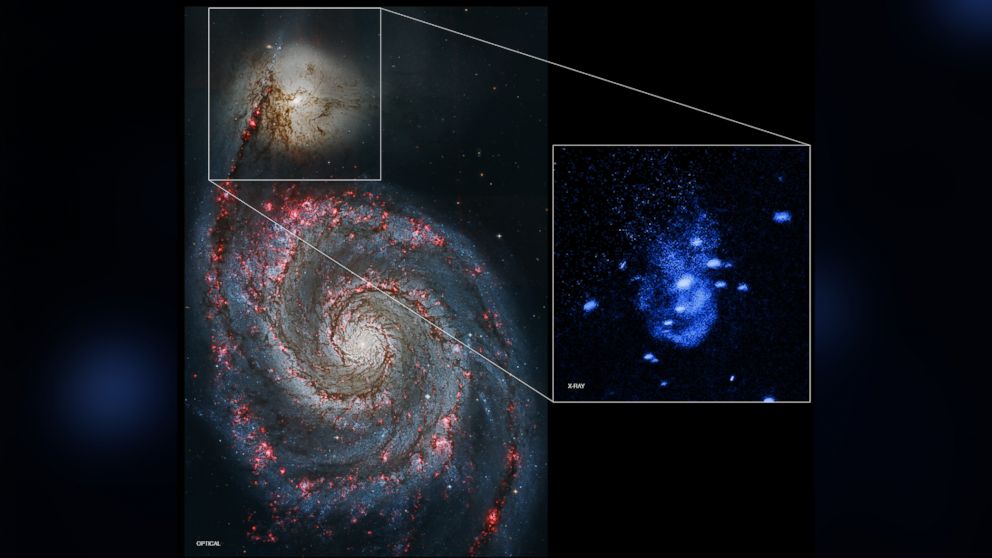NASA Caught a Black Hole 'Burping' in a Nearby Galaxy
The cosmic belch may point toward behavior in early universe evolution.

— -- A nearby super-massive black hole is “burping” out gases after ingesting nearby matter, a discovery, scientists say, is important to understanding the behavior that occurs early in the evolution of universes.
Astronomers using NASA’s Chandra X-ray Observatory say this black hole at the center of a neighboring galaxy is ejecting violent, powerful blasts after "eating" stars.
“Apparently, black holes can also burp after their meal,” said Eric Schlegel of The University of Texas in San Antonio, who led the study.
“Our observation is important because this behavior would likely happen very often in the early universe, altering the evolution of galaxies. It is common for big black holes to expel gas outward, but rare to have such a close, resolved view of these events.”
The new research on these cosmic belches shows the outburst in the supermassive black hole centered in the small galaxy NGC 5195. Astronomers believe this phenomenon is caused by gas funneling in toward the black hole, thus generating enough energy to produce these ejections.
“We think that feedback keeps galaxies from becoming too large,” said study co-author Marie Machacek of the Harvard-Smithsonian Center for Astrophysics. “But at the same time, it can be responsible for how some stars form. This shows that black holes can create, not just destroy.”
This is not the first time NASA has humanized many of its celestial discoveries.
In 2013, NASA announced the Hubble telescope encountered a star caught in a “sneezing fit.” Over the course of a few years, scientists would be able see rapid expulsions of hot gas before the star finally exhausted itself.
Another research endeavor from the space agency spotted possible “screams” from the core of the Milky Way Galaxy. NASA’s Nuclear Spectroscopic Telescope Array (NuSTAR) documented "howls" of mysterious rays possibly from dead stars as they feed on their stellar neighbors.
One theory published by NASA indicates that collapsed dead stars often feed off a fellow nearby star, creating a zombie-like process and resulting in an eruption of X-rays.
Not all celestial phenomena are so crude, however.
In October of 2015, the European Southern Observatory observed two stars seeming to conjoin for a “final kiss” before a catastrophic event.
In February of the same year, NASA released an upbeat image of a galaxy cluster seemingly smiling, complete with two eyes and nose. The eyes are in fact two illuminating galaxies and the arcs were caused by an effect known as strong gravitational lensing.




